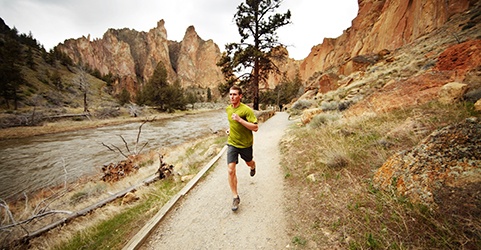
Many of the top United States Track and Field athletes travel to Denver to live and train for the chance at Olympic gold. There is a reason “The Mile High City” is the destination for the athletes to train at; due to the high altitude, the human body is exposed to hypoxia (oxygen reduced environments), it struggles to produce required amounts of energy with less available oxygen.
The body is then forced to acclimatize to the lower levels of oxygen, which triggers the onset of a range of physiological adaptations geared towards enhancing the efficiency of the body’s respiratory, cardiovascular and oxygen utilization systems.
All of the different adaptations the body makes includes an increase in the number of small blood vessels, which in return means an increase in oxygen being supplied to the body. After a couple weeks training at altitude, athletes then return to sea level and compete with a physiological advantage (10-14 day time period).
There are of course some side effects to high altitude training that can negate the benefits. The first that comes to mind is altitude sickness. Altitude sickness symptoms include headaches, dizziness, and nausea, shortness of breath, rapid heart rate, and fatigue. Other side effects of high altitude training can be dehydration, muscle loss, and decrease of endurance. The athlete should take certain precautions when exercising at a higher altitude as it takes the body several days to acclimate to the change in air pressure. You should exercise at a lesser intensity than you normally do for at least the first few days.
One question you may be asking is ‘how does someone living far from any sort of mountains train at higher altitudes?’ That’s where products like an altitude tent come into play. The tent uses compressed nitrogen gas to thin the oxygen in the air to replicate high altitude living in a tent-like shroud around your bed. A major downside to the average runner is the tents can cost upwards of around $10,000 or 400 pairs of Sensoria Fitness Socks.

Training masks have become popular over the past few years because you wear while exercising so you are able to live in low altitudes but train as if you’re in the mountains. The masks use mechanical valves to generate resistance to inhalation, and according to Training Mask’s website “By conditioning your lungs and creating pulmonary resistance, your diaphragm is strengthened, thereby making your lungs work harder. When lungs work harder, the surface area and elasticity in the alveoli is increased, thus increasing your stamina and ability to go harder at your sport – or simply have increased energy for daily living.”
There’s scientific studies looking into the potential benefits of altitude masks yet also problematic studies in terms of potential risks in unfit individuals and those with cardiac or pulmonary conditions, hemoglobin abnormalities, hypertension, or other health issues. Use by those who are unfit or have medical concerns is not well studied, but possible complications have been voiced.
